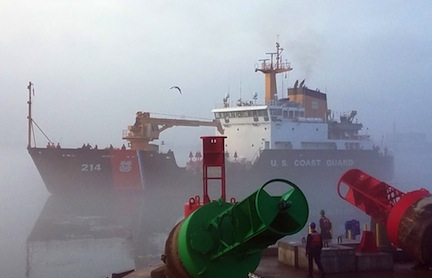The following is the text of a news release from the U.S. Coast Guard:
(CLEVELAND) — Coast Guard aids to navigation teams throughout the Ninth Coast Guard District began restoring the Great Lakes and St. Lawrence Seaway aids to navigation system on March 28.
Slightly more than 11 percent of the operation has been completed so far.
Operation Spring Restore involves placing approximately 1,216 navigational aids, including lighted and unlighted buoys and beacons. Roughly half of the aids in the region are taken out of service during the winter months due to decreased vessel traffic and to minimize damage from ice and inclement weather. This is known as Operation Fall Retrieve.
The aids put into service during Operation Spring Restore are all floating aids. All have a purpose and help in determining location, as well as facilitating the safe transit of more than 100 million tons of cargo between U.S. ports in the Great Lakes and to international ports via the St. Lawrence Seaway and Atlantic Ocean.
The 9th District’s aids to navigation system facilitates safe and efficient maritime activity on the Great Lakes and St. Lawrence Seaway regions by marking safe passage for domestic, international, commercial and recreational vessel traffic. On the Great Lakes, the Coast Guard manages 2,557 federal aids.
To accomplish Operation Spring Restore, the 9th District utilizes six U.S. Coast Guard cutters, five aids-to-navigation teams and two small boat stations with aids to navigation duties. The Coast Guard is assisted in this endeavor by: the Lamplighters, a group of civilian employees who manage the inland waters of northern Minnesota; the Canadian Coast Guard; and the St. Lawrence Seaway Corp.
The Coast Guard Auxiliary also helps the district with verification of approximately 1,700 privately-owned aids to navigation in the region.
The waters of the Great Lakes are marked to assist navigation according to the U.S. Aids to Navigation System. This system employs a simple arrangement of colors, shapes, numbers and light characteristics to mark navigable channels, waterways and obstructions adjacent to them.

